How the Government Makes Money
There are three ways in which a government earns money: revenue receipts, capital receipts, and printing money.
How the Government Makes Money?
When we talk about money with the government, more than often, the first thing that comes to our mind is taxes. But that is not the only source of income for the government.

There are three sources through which a government earns money:
- Revenue Receipts
- Capital Receipts
- Printing more money
The above-stated points are the main revenue-generating avenues for a government. In this article, we will cover each of the above-stated points.
The first thing that we have to understand is ‘The Government Budget'. Every year, the government presents an annual financial statement of its estimated financial receipts and estimated financial expenditure for its economy.
These estimates help taxpayers gauge where the government is headed regarding how it is spending taxpayer money. Collected taxes are also known as the ‘Union Budget’ because the union represents it, i.e., the Central Government.

State Governments must also generate a statement with rough estimates of their respective income and expenses for the coming period.
The government employs various revenue-generating mechanisms to meet its financial obligations. One significant source of income for the government is taxation. Furthermore, a government may generate income through investments and assets.
It may invest in various sectors such as stocks, bonds, and real estate, earning returns on these investments. Additionally, the government may own and operate state-run enterprises, contributing to its income through profits generated by these entities.
There are two types of receipts for a government:
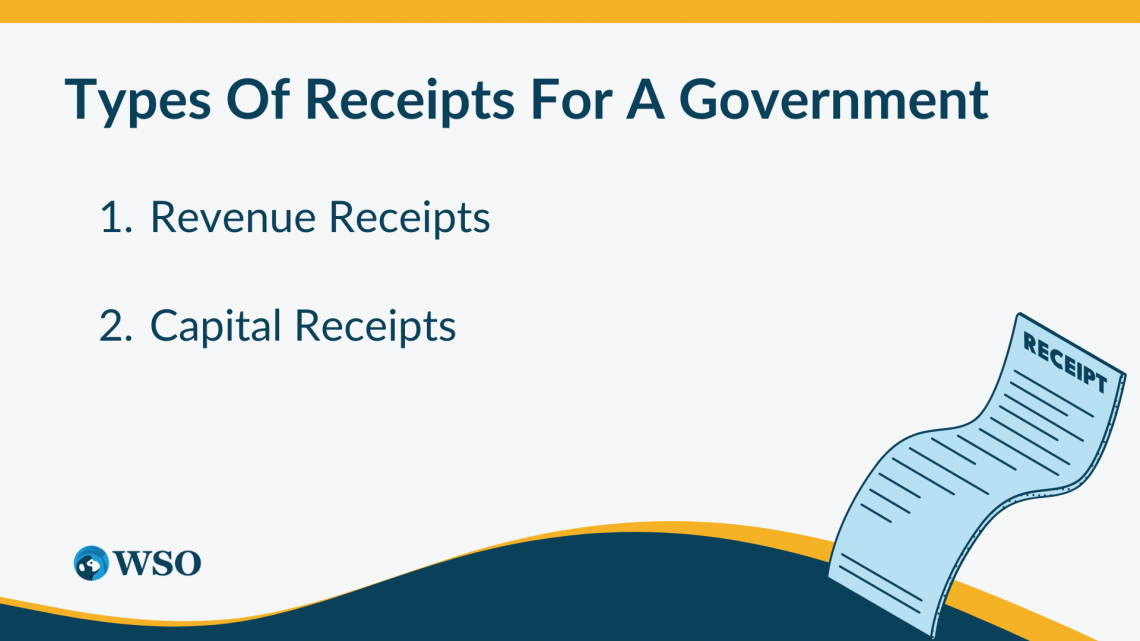
1. Revenue Receipts
These receipts neither create any liability nor reduce any assets for the government (e.g., Tax Revenue).
When a government receives revenue receipts, it neither incurs any obligation to make the payment nor does it lead to a reduction in its wealth.
2. Capital Receipts
These receipts either create a liability or reduce the assets of the government. For example, the divestment of public sector enterprises such as Air India & Life Insurance Corporation.
There are various heads under these heads through which a government earns money. Naturally, the government of a country needs money to finance its expenditure.
There are two types of expenditure that a government incurs:
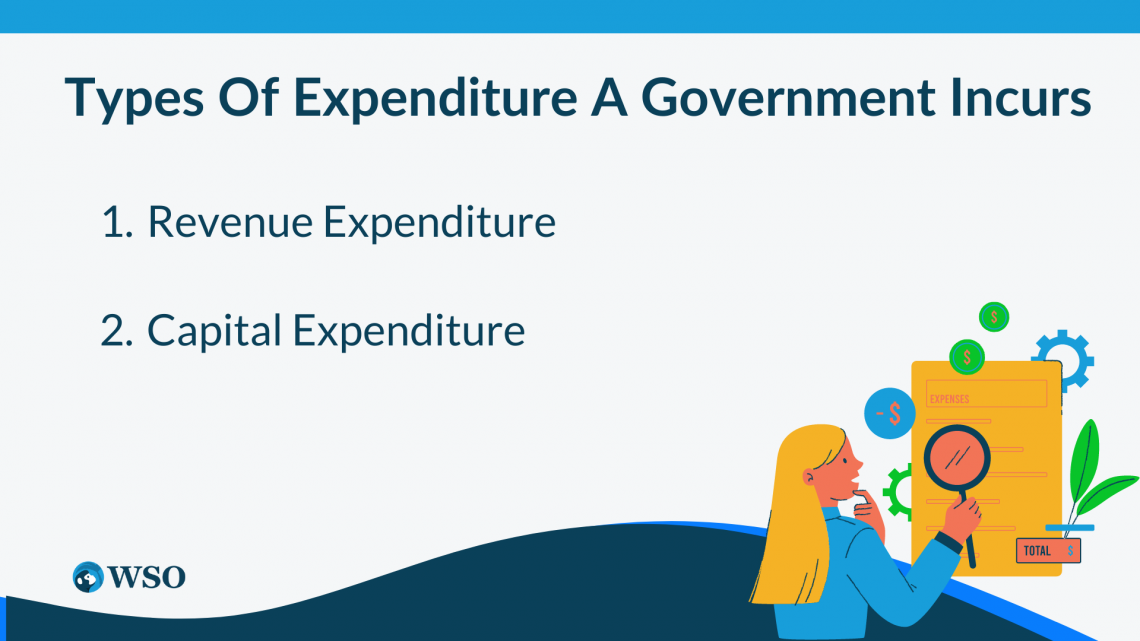
1. Revenue Expenditure
These expenditures neither create any assets nor reduce any liability for the Government (e.g., operating expenses for a government entity).
It essentially means that revenue expenditure does not lead to any wealth creation for the government, nor does it reduce the government's obligation.
2. Capital Expenditure
These expenditures either create an asset or reduce liability for the government.
For example, the repayment of loans and/or the creation of infrastructure.
A government does not adjust its expenditure in accordance with its income. It adjusts its income according to the expenditure because a country cannot neglect the development of dams, bridges, roads, street lights, etc., due to insufficient funds.
Key Takeaways
- Governments prepare their budgets to showcase the estimated expenditure and receipts for the upcoming financial year.
- A government adjusts its income according to its expenditure rather than its expenses, as it needs sufficient funding to aid its country to thrive through developing it.
- There are three ways in which a government earns money: revenue receipts, capital receipts, and printing money.
- Printing money leads to inflation due to an increase in the money supply.
- Taxation is the major source of revenue for the government.
- Revenue receipts are those that neither create liability nor reduce assets.
- Capital receipts are those receipts that either reduce assets or increase liability.
How Governments Make Money By Revenue Receipts
Major heads of income under revenue receipts are:
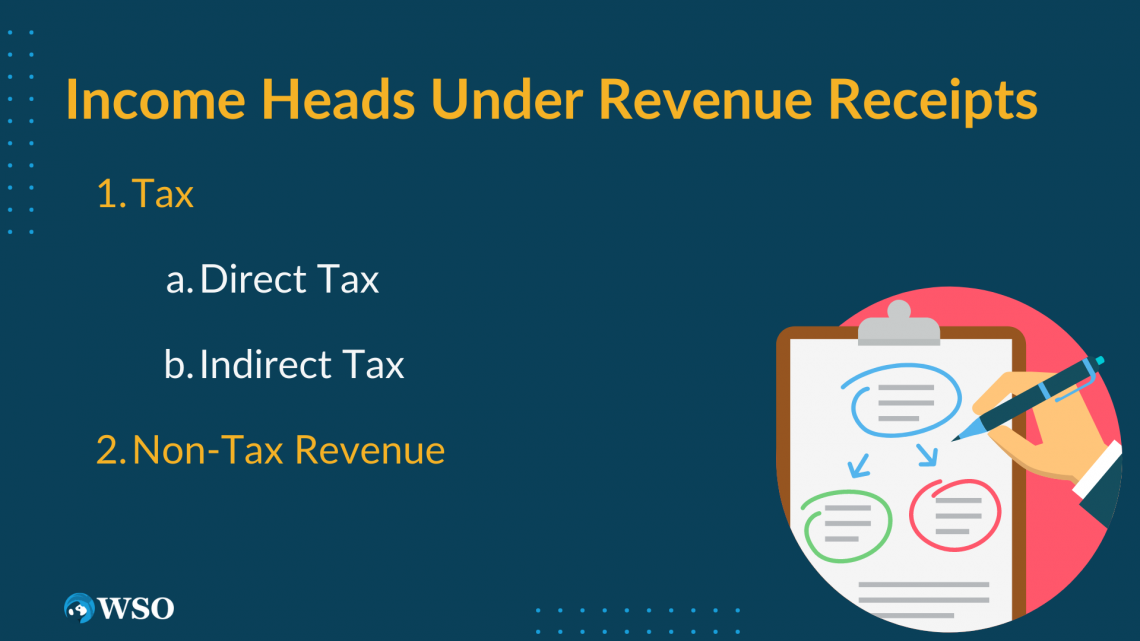
1. Tax
A legal compulsory payment made by citizens/residents and for-profit organizations to the government. This makes up the major chunk of the government’s revenue.
There are two main types of taxation: direct and indirect.
a. Direct Tax
Paid directly by citizens/residents and for-profit organizations to the government, it is usually labeled as “income tax.”
b. Indirect Tax
In which the burden of payment can be shifted. These are taxes you pay when you buy a good. It can be something as small as candy or as big as a car.
Note
For each of these goods, you are paying tax. This would be your basic sales tax when purchasing any item from a store.
2. Non-Tax Revenue
This includes profits of government-owned enterprises, charges from government-provided services like electricity and gas services, and fees collected in the form of fines.
How The Government Makes Money by Capital Receipts
Now, the major heads of income under capital receipts are:
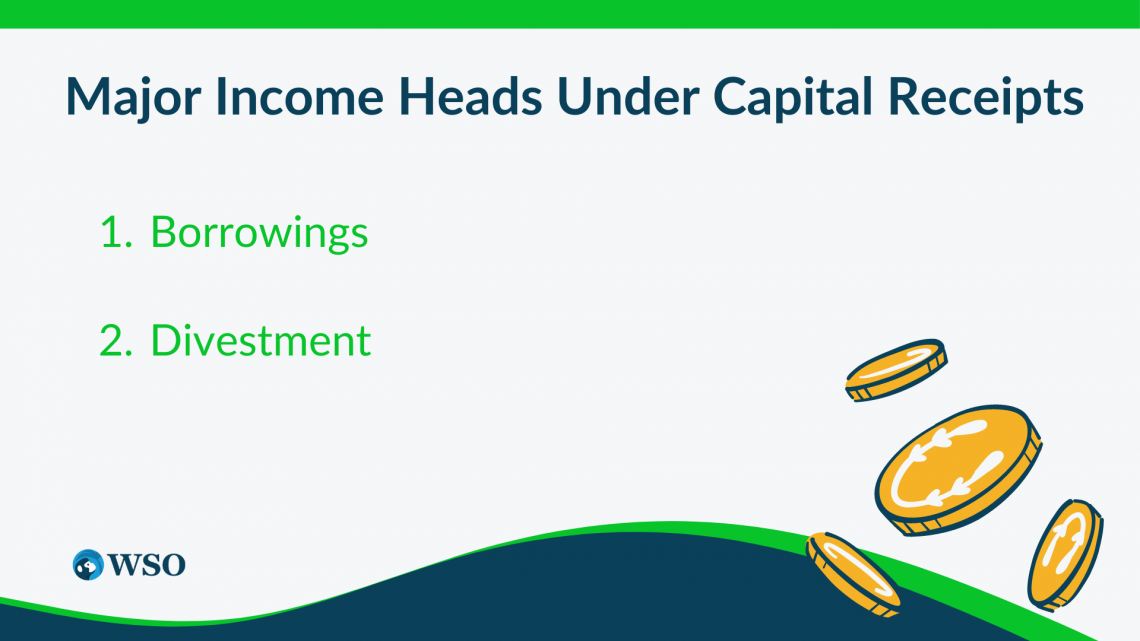
1. Borrowings
Loans taken by the government are known as borrowings. The government does not have unlimited money, nor can it print it endlessly.
This means that they have to borrow it from somewhere. In simplest terms, debt is defined as generating revenue by taking on debt (which essentially makes money out of thin air).
One of the ways the U.S. government does this is by issuing financial instruments such as treasury bonds to the public.
The bonds a government issues to the public are essentially a risk-free way for bondholders to earn money through the interest it gains from lending money to the government.
Note
While the bondholders will not necessarily amass a fortune overnight with these bonds, they will still have a relatively risk-free way of generating income over a stated period.
The government then takes the principal borrowed and either spends that money on immediate needs or invests it elsewhere to generate even more money. It then pays back the bondholders a very small percentage of the returns the government generated from investing the bondholders’ money.
It usually borrows money from:
- Other countries
- Internal Financing (borrowing money from the public or the central bank of own country)
- International institutions like the World Bank for financial relief
2. Divestment
Governments selling their stake in the public sector enterprise is known as dis-investment. It is one of how the government may meet its expenditure. Governments may exit loss-making sectors and sell them to the private sector, known as privatization.
In this, a government may either exit entirely or hold a minority stake in the enterprise. This move leads to the reduction of assets. It has a chain effect because it also affects the non-tax revenue.
Note
The Government looks at dis-investment only as a last resort.
It allows private investors to invest in public sector enterprises, allowing them to take over, eventually leading to less corruption and better services.
A government needs to carefully plan and execute disinvestment strategies while ensuring transparency, fairness, and proper valuation.
How The Government Makes Money by Printing Money
This is by far the most debated strategy. This is one of the less traditional methods (but probably the easiest) the government uses to generate money simply by printing more!

This approach is not as common as others (even though it has been gaining popularity over the past few years) since the United States economy rested on the gold standard until the Nixon Administration.
This standard meant that each dollar distributed was backed by real gold in the government’s possession and, in turn, limited the government to produce only the amount of money equal to the amount of gold the government held.
However, on the fateful day of August 15th, 1971, President Richard Nixon abandoned the gold standard to address the country's inflation problem and discouraged foreign governments from redeeming more and more dollars for gold, among other reasons.
Because the gold standard forced retaining a fixed exchange rate, the United States government was hamstrung in engaging in expansionary policies, which consequently interfered with economic agendas, including reducing unemployment during economic recessions.
Note
There are a few repercussions that follow printing money. The main problem of all is ‘inflation.’
Now, you might ask how printing money causes inflation... when a country's central bank prints money, it increases the money supply in the country because there is more money in circulation.
When the money supply expands, individuals' purchasing power improves since they can hold greater amounts of cash in their hands. They are going to buy more goods and services and spend greater sums of cash, and consequently, demand will rise.
But with the increase in demand, the supply would not increase because the producers have limited resources, thereby leading to a situation of demand>supply. As a result, the producer will increase prices. Hence, we face inflation.
Therefore, government agencies need to use utmost caution while printing money because it is highly vulnerable. If this instrument is utilized unethically, it can collapse the entire economy.
When a government expands the money supply excessively without increasing the manufacturing of goods and services, this might lead to hyperinflation. This increase in money supply leads the currency to depreciate, causing prices to rise.
Case Study: Zimbabwe (2007-2009)
Zimbabwe experienced a notable instance of hyperinflation between 2007 and 2009. The government, led by President Robert Mugabe, engaged in excessive money printing to finance budget deficits and unsustainable programs, such as the seizure of white-owned farms.
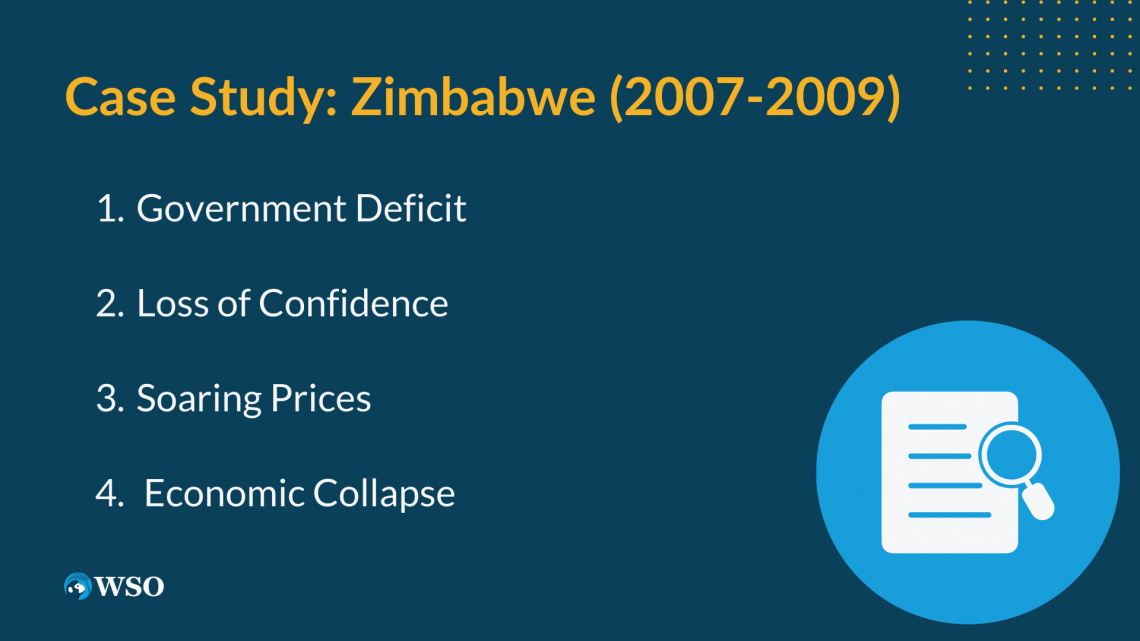
Key points from this case include:
1. Government Deficit
The Zimbabwean government faced substantial budget deficits and resorted to printing money to cover the shortfall. Consequently, the money supply experienced an exponential increase.
2. Loss of Confidence
Excessive money printing eroded confidence in the Zimbabwean dollar, resulting in rapid devaluation. Citizens lost faith in the currency and sought alternative stores of value like foreign currencies and commodities.
3. Soaring Prices
The depreciation of the currency led to skyrocketing prices. Basic necessities became unaffordable for many, and the cost of living dramatically rose.
Note
Inflation reached astronomical levels, estimated to have peaked at around 89.7 sextillion percent per month in mid-November 2008.
Hyperinflation crippled the Zimbabwean economy. Businesses struggled to operate, unemployment soared, and foreign investment dried up.
This case study highlights the devastating impact of uncontrolled money printing without corresponding economic growth and fiscal responsibility. It demonstrates how such actions can lead to hyperinflation, causing immense hardship for citizens and the collapse of an economy.
Summary
The government plays an important economic role by generating revenue through various sources. Understanding how the government makes money is essential to comprehending its financial operations and potential risks.
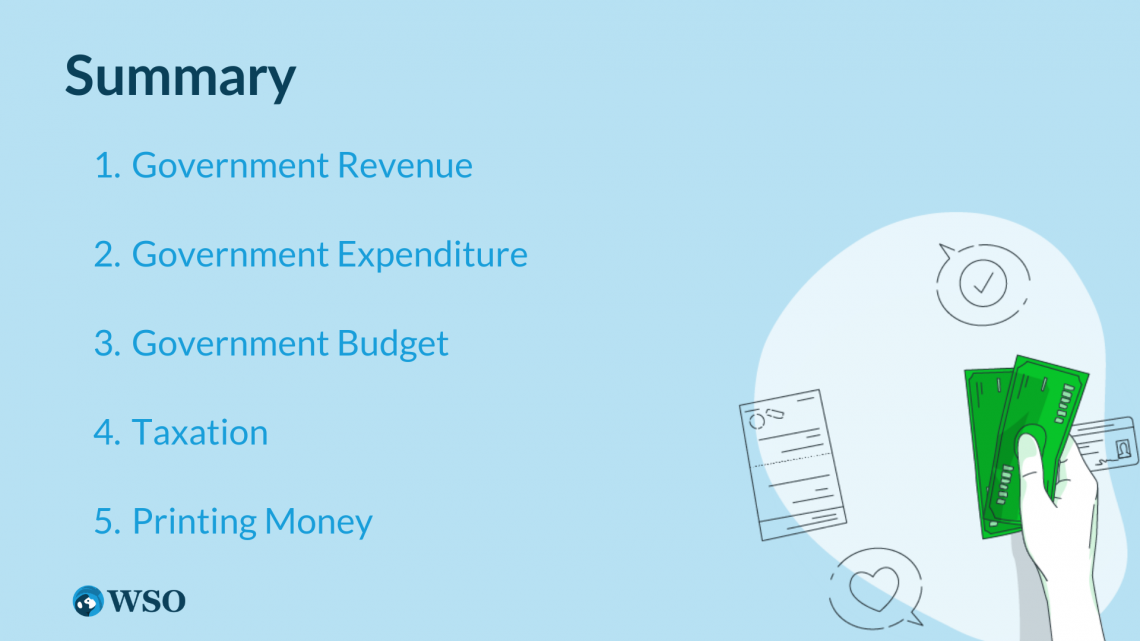
1. Government Revenue
The government earns money through revenue receipts and capital receipts. Revenue receipts include taxation, investments, and profits from state-run enterprises. Capital receipts involve borrowings and disinvestment of public sector enterprises.
2. Government Expenditure
The government incurs revenue and capital expenditures.
Note
Revenue expenditure covers daily expenses, while capital expenditure includes asset creation and liability reduction.
3. Government Budget
The government presents an annual financial statement, known as the Union Budget, detailing estimated receipts and expenditures. State governments also provide similar statements.
4. Taxation
Taxation is an important driver of government revenue, especially direct taxes (such as income tax) and indirect taxes (such as sales and use tax) being the most common.
5. Printing Money
While controversial, printing money is a method the government uses to generate funds. However, it carries a risk of inflation due to the increased money supply in the country.










or Want to Sign up with your social account?